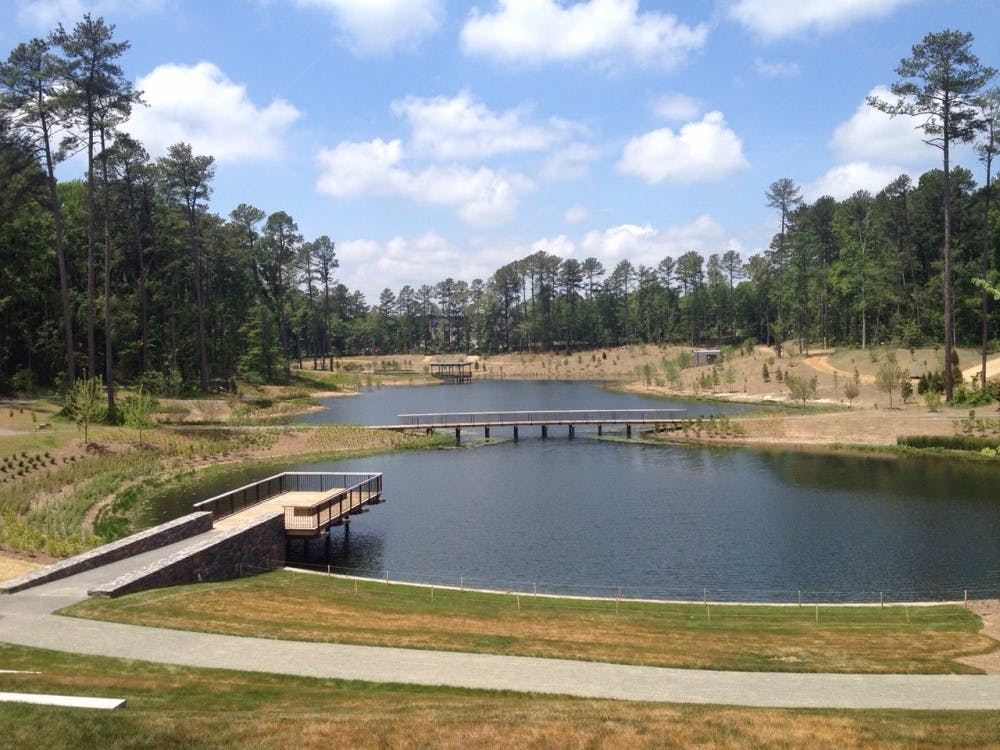Duke became the first university in the nation to open a major storm water reuse facility when it opened its new reclamation pond May 8.
The 5.5-acre pond, which cost $11.5 million to build, is located at the corner of Erwin and Towerview Roads. Filled with more than 12 million gallons, the pond will save water and money by collecting rainwater that can be used in the process of making chilled water. It will also provide a backup system for water treatment. The pond’s scope and its multitude of functionalities are part of what makes it so unique, said Curtis Richardson, director of the Duke University Wetland Center.
“Most universities have not come to deal with the fact that water is going to be a major issue,” he said. "We did a survey of about 300 to 400 universities to look at their water plans, and we did not come across any other places that had done this."
Although other universities studied in the survey had some water conservation initiatives such as recycled toilets and wastewater treatment plans, none were as expansive as what Duke has implemented, he said.
Richardson said the 2008 drought was the main factor that pushed the project forward, noting that Durham had at one point fallen to about a month’s supply of water—a dangerously low level. With the construction of the pond, an estimated 100 million additional gallons will be saved each year.
Of the 12 million gallons of water in the pond, the University is only drawing between 100,000 to 400,000 gallons at a time, Richardson said, though that number would likely increase during another drought.
“It should have the capacity to take care of all the major university needs,” he said. “If we have a major drought, that’s a different story.”
The pond was designed with student visitors in mind—it has the potential to serve as an educational resource for classes and a destination for running or hiking. Additional features of the pond include an exterior amphitheater, a bridge and a 0.6 mile long walking path. These features will allow the pond to extend beyond its role as a water reuse facility and serve both recreational and educational functions, Sarah Burdick, director of administration and special projects in Duke’s facilities management department, wrote in an email May 14.
The pond site also features more than 30,000 plants, which were selected by the facilities management department in collaboration with the biology department, Burdick wrote.
“I can definitely see students benefiting from it as long as they know to take advantage of it,” said senior Cori Hayes, who visited in early May. “It’s a nice place to be able to take a break and walk around.”
Richardson said he hopes the reclamation pond will start to attract student visitors once the Fall semester starts.
“I think it’s important that students know about it,” he said.
Correction: This article originally incorrectly stated that water from the reclamation pond would be distributed across campus to cool buildings, but it will only be used in the process of making chilled water. The article also used the phrase "water reusage" to describe the pond instead of "water reuse." The Chronicle regrets the errors.
Get The Chronicle straight to your inbox
Signup for our weekly newsletter. Cancel at any time.

